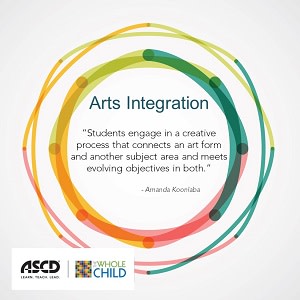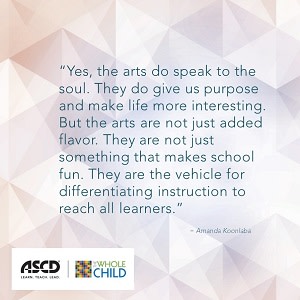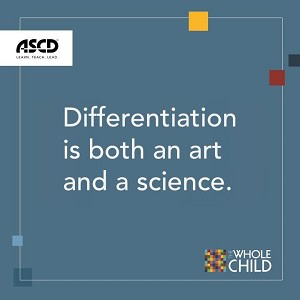Curriculum review cycles are a part of the improvement process in every district. To fund program change, leaders often structure review cycles to rotate through K-12 contents or programs every 5-10 years. This allows for a multi-year review for each content that is scaffolded, complete with an influx of funds to upgrade materials coupled with a multi-year timeline of implementation and support. But to truly drive programmatic changes, we have to look past materials and use the curriculum review cycle as an opportunity to engage in systemic program improvements.
A key element to supporting organizational change in school districts is using existing structures to support change conversations and prioritize district goals. Thus, our K-12 curriculum review cycles must morph from a conversation about materials to a whole-program conversation on instruction, assessment, and equity. For example, a science curriculum review would normally look at K-12 curriculum standards alignment and textbooks or materials, but a whole-program review looks at research-based approaches to instruction and assessment and plans for professional development opportunities to improve practice, not just adopt a textbook.
To begin this shift, we should look at our programs through an equity lens, set goals for where we want our programs to be in five years, reflect on our use of assessment as well as our outcomes, and use the review cycle as an opportunity to define high-quality instruction in our content. A comprehensive program review can support organizational change in a way that a traditional curriculum review cannot.
Step 1: Reflect on Your Program Through an Equity Lens
Equity is ubiquitous in educational change conversations, and for good reason. Ultimately, our goal as district leaders is to provide all students with equitable access to opportunity across their K-12 education experience. To this end, we have to reflect on the accessibility of our programs and look at which policies and practices are functioning as supporters of equity, and which are posing as barriers to equity. The first action to take in the program review process should be conducting an equity assessment. Leaders should ask these critical questions:
- Do all our students have equal access to the curriculum?
- Do all our students have equal access to instruction that provides multiple entry points to grade-level curriculum?
- Do all our students have opportunities to provide multiple ways to demonstrate their learning?
When program review cycles begin with these overarching questions, they can get at the critical needs of the program and identify areas of strength within their programs that they can grow through targeted professional development.
A key element to supporting organizational change in school districts is using existing structures to support change conversations and prioritize district goals.
Step 2: Set Five-Year Program Goals
Teachers engage in backwards design consistently through lessons and units to support their planning for student learning. This is how teacher preparation programs train our teachers to think about teaching and learning. Our programs should do this too. Setting a goal for where we want to be in five years in terms of pedagogy and student outcomes will allow leaders to leverage the review cycle process to reflect on their success in the last cycle, and allow our curriculum review committees to backwards-design program goals.
Public schools have limited funding, and we’re not going to change the budgetary constraints that necessitate the typical cycle between program reviews, but we can use that cycle to our advantage and integrate goal setting and reflection into our program review process.
Let’s say our program goal is to increase access to advanced coursework in the next five years. Setting that goal allows for the curriculum review committee to identify a timeline for change:
Goal: Increase access to advanced coursework in the next five years.
↠ Revise curriculum maps across course levels to ensure all students have equal access to curriculum.
↠ Refine placement practices to encourage equitable access to course offerings.
↠ Implement MTSS to support student success in courses.
↠ Assess progress toward goal and refine approach where needed.
↠ Assess progress toward goal and identify future changes.
When program leaders set long-term goals, they identify the mission of their program and a clear intention for improvement. Grounding our work with teachers and defining that throughline between where we are now and where we want to be in the future will help our teachers and leaders understand why we’re adopting specific curriculum materials, and why we’re emphasizing specific instructional or assessment practices. Setting goals in our program review cycle can define our purpose and support forward momentum.
Step 3: Reflect on Your Use of Assessment and Student Outcomes
Assessment outcomes are commonplace in data conversations and curriculum review cycles. We use these outcomes to help identify areas of growth and areas of improvement. While it makes perfect logistical sense to use data to assess the effectiveness of our programs, it also makes sense to use the program review cycle as an opportunity to reflect on our use of assessments in general. Asking specific questions about the nature of our assessment practices and products can help identify where we need to focus improvement efforts. Program leaders should ask:
- Are our assessments aligned to our curriculum frameworks and representative of expectations for student mastery?
- Do our assessments reflect what all students know and are able to do?
- Are we measuring student success in alignment with research on how students learn?
For school and district leaders, our approach to assessment should reflect our philosophy on teaching and learning. When assessment integrates a variety of ways for students to demonstrate their learning and includes experiential and real-world application, we are preparing students for multiple college and career pathways. Program reviews can be an opportunity to reset our approach to assessing learning.
Step 4: Define High-Quality Instruction
When program reviews integrate a conversation on instruction, we can focus on the practical implementation of curriculum and assessment and maximize our impact on student learning. Program leaders should sit down and look at research on improving instruction in their content areas and use these recommendations to assess the quality of instruction. A great starting place is the What Works Clearinghouse from the Institute of Education Sciences. Engaging in a discovery of instructional recommendations will support curriculum review committees to develop a localized approach to improving instruction. Program leaders should ask:
- How does our professional organization (NCTM, NCTE, or NSTA) define high-quality instruction?
- What are the national and state recommendations on how teachers can improve instruction in their classroom?
- How can we align our approach to instruction with these recommendations?
When we focus on instructional improvement, we expand the curriculum review cycle to a program review that supports organizational change, and we extend improvement conversations to include the entirety of our work over that five-year timespan. A focus on instruction supports the continued work of our program leaders and gives our year of review purpose.
The Bottom Line
As school districts begin to kick off curriculum review cycles and support their curriculum and instructional leaders in shaping their next few years, they should begin with shifting the purpose of the review cycle and aligning their work to the improvement cycle. When we focus on equity, set clear goals, and include instruction and assessment in our change conversations, we set programs on a path toward equitable improvement and support systemic change. Change is slow, and to change an organization we must use an improvement cycle that is both consistent and strategic. When we make our program reviews about equity and not just about adopting instructional materials, we ensure we are building a program that is for all kids.








